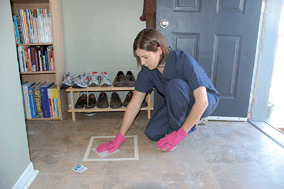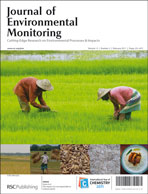Extending wipe sampling methodologies to elements other than lead
Abstract
Wipe sampling is the USA regulatory protocol for determination of “dust lead loadings” in residential environments. Few studies have applied the wipe sampling method to metals other than lead (Pb) for the purpose of residential exposure assessments. This study was undertaken to develop and expand the wipe method for quantifying additional metal(loid)s including arsenic (As), cadmium (Cd), chromium (Cr), copper (Cu), nickel (Ni), and antimony (Sb); and to provide information on typical background loadings for these metals in urban Canadian homes. A total of 932 wipe samples, 220 field blanks, and 220 duplicate wipes were collected from 222 homes located in three cities in Ontario, Canada using the ASTM 1728 standard. The wipes were digested using a modified version of the ASTM 1644 standard for Pb, which prescribes a hot nitric acid/hydrogen peroxide digestion. The key modification was the addition of


 Please wait while we load your content...
Please wait while we load your content...